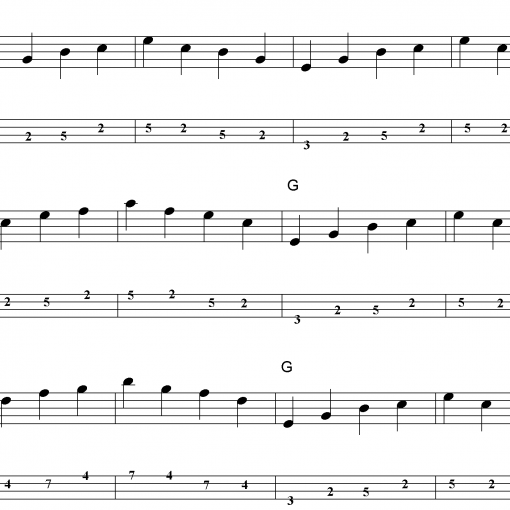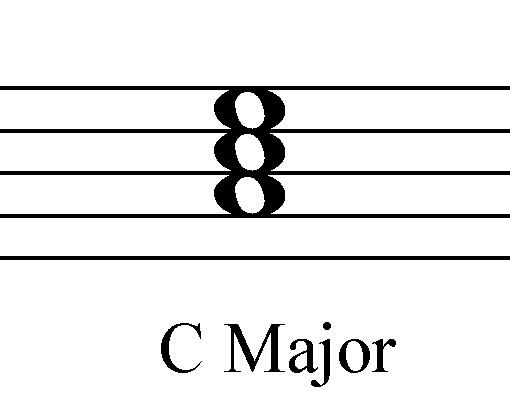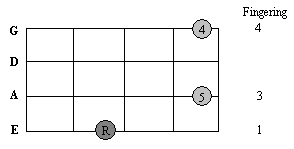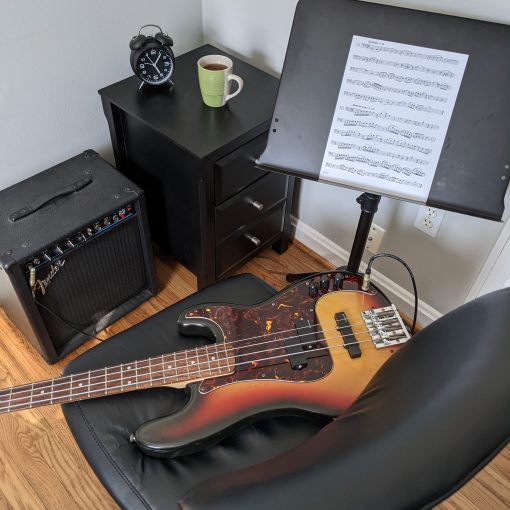Level: intermediate
No part of this lesson may be copied, reproduced, or distributed in any form without consent of the author. Copyright © Doug Ross, all rights reserved.
In the previous lesson, we covered root position fingerings for all common three-note chords on 4 string bass. However, in most forms of popular music, four-note chords (a.k.a. “7th chords”) are also very common. So let’s continue with some voicings for the most common types of 7th chords. Again, we will stick to root position voicings with the root either on the E string or on the A string.
When we get into chords with more than 3 notes, fingerings can become more difficult, and the low register of the bass can make things sound pretty muddy, even above the 12th fret. So, in many cases, I have omitted one note from the chord to keep things from getting too cluttered. Most often, the 5th is the most expendable note in a chord, in the sense that it’s not essential to the basic sound quality. For example, here is a Major 7 chord with the root on the E string and the 5th left out:
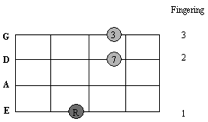
Here is a Major 7 chord with the root on the A string (again no 5th):
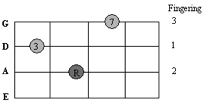
Dominant 7 chords will look the same as Major 7, but the 7th degree is lowered one fret. Here with the root on the E string:
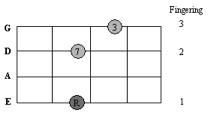
And with the root on the A string:
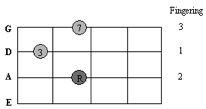
Here’s a Dominant 7(sus4) chord with the root on the E string:
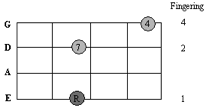
And with the root on the A string:
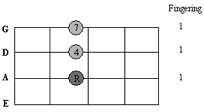
Minor 7 chords can also be played without a 5th. Here’s a minor 7 with the root on the E string:

And a minor 7 with the root on the A string:
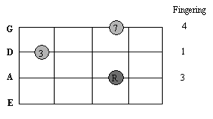
When a four-note chord contains an altered 5th (i.e. sharped or flatted), you really need all four notes to get the full sound of the chord, so these next few can be a little harder to play. If my suggested fingerings don’t work for you, you might be able to work out your own fingering or perhaps leave out the root of the chord. Here is my suggested fingering for a minor 7(b5) chord:
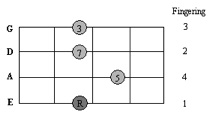
Another common 4-note chord with an altered 5th is the diminished 7 chord:
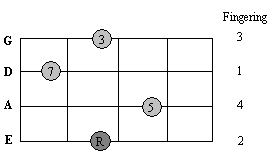
Dominant 7(#5) chords are also quite common:
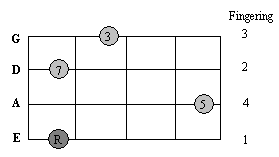
There are some other, slightly less common 7th chords, such as Maj7(#5) and min(Maj7), but for starters, the above voicings, combined with triad voicings from the previous lesson, should get you through a lot of tunes. As you learn more and more about harmony, you will be able to figure out voicings even for chords with upper extensions like 9ths and 13ths. Hint: it has to do with knowing which notes are essential and which can be left out. Good luck, and remember to practice these slowly without straining yourself.
